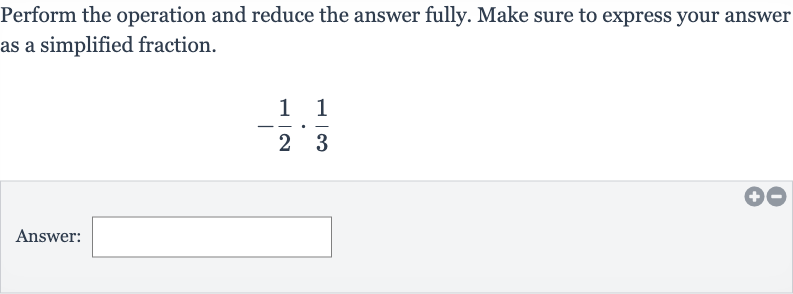AI tutor
Welcome to Bytelearn!
Let’s check out your problem:

Perform the operation and reduce the answer fully. Make sure to express your answer as a simplified fraction.Answer:
Full solution
Q. Perform the operation and reduce the answer fully. Make sure to express your answer as a simplified fraction.Answer:
- Multiply Numerators: Multiply the numerators of the two fractions.We have two fractions, and . To multiply fractions, we multiply the numerators (the top numbers) together and the denominators (the bottom numbers) together.Calculation:
- Multiply Denominators: Multiply the denominators of the two fractions.Now we multiply the denominators of the two fractions.Calculation:
- Write Result as Fraction: Write the result as a fraction.We combine the results of Step and Step to form a new fraction.Calculation:
- Check for Simplification: Check if the fraction can be simplified further.The fraction is already in its simplest form because the numerator and the denominator have no common factors other than .
More problems from Multiplication with rational exponents
QuestionGet tutor help
QuestionGet tutor help
QuestionGet tutor help
QuestionGet tutor help
QuestionGet tutor help
